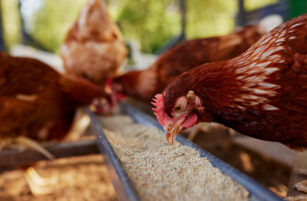Insight Focus
- The USDA overlooked three key issues in the March WASDE.
- Ukrainian corn plantings and wheat harvesting will likely be delayed.
- Global grains yields should also be poor with fertiliser supply limited.
Nixal’s Forecast
Our price forecast for 2021/22 (Sep/Oct) Chicago corn remains unchanged in a range of 5.3 to 5.8 USD/bu.
Our forecast is under revision, though, pointing to a range of 5.5 to 6 USD/bu. This is because Russia’s invasion of Ukraine should lead to lower corn plantings and global yields.
The average price since the start of the new crop is running at 5.9 USD/bu.
Last week was another positive one for all grains except for wheat in Chicago, which corrected due to the March expiry on Monday.
The March WASDE was also published. Interestingly, the USDA didn’t address disruptions to Ukrainian corn planting even though the government there has already excused farmers from military service and said spring planting will be severely disrupted. Black Sea supply remains suspended and nearby countries have imposed restrictions to grains exports, so high prices should persist.
Elsewhere, in the US, corn production was unchanged, but ethanol demand and export were increased, with closing stocks dropping by 100m bu as a result. Further south, Argentinian production was lowered to 53m tonnes, down 1m tonnes from before. All other changes were marginal so global corn ending stocks were cut by 1m tonnes to 301m tonnes.
Wheat
The USDA left its wheat production estimates for Ukraine and Russia basically unchanged. This makes sense as most has already been planted. Spring wheat, the only crop left to be planted, could suffer disruption.
As for Ukrainian wheat exports, the USDA only cut these by 4m tonnes. Wheat harvesting starts in the summer so there’s still time for things to settle down. However, there’s certainly a risk that wheat won’t be being harvested in full.
Global wheat stocks were increased by 3.3m tonnes. Grains ending stocks more broadly were increased by 6.5m tonnes on the back of higher production, cancelling out the 6m tonne deficit seen previously.
The USDA will publish its planting report by the end of the month, based on a poll sent to farmers. Today’s volatility could mean farmers change their planting decisions between the poll and when planting starts, though. Production costs have increased alongside corn and soybean, so farmers could be tempted to maximise acreage here. Russia is also considering a ban on grains exports between mid-March and August.
Looking at European ethanol, Hungary, Bulgaria, and Romania have imposed controls on wheat and corn, as well as other cereals, which could make it difficult for ethanol plants in Western Europe to receive corn. We may see plants going into maintenance for a longer period than required.
Nixal’s Concluding Thoughts
All in all, we think the USDA overlooked three problems on the production side:
1. The risk of disruption to corn planting in Ukraine
2. The risk of disruption to wheat harvesting in Ukraine
3. The risk of lower global yields due to less of Russian and Ukrainian fertiliser
The longer the conflict lasts, the more at-risk Ukrainian corn planting will be. It usually produces and exports 42m tonnes and 33m tonnes of corn respectfully. The high price environment should therefore remain. Acreage for US corn and soybean will also be published before the end of the month, acting as another important price driver.
Other Insights That May Be of Interest…
Ukraine & Grains: Who is Most at Risk?
Russia & Ukraine Grains Likely to Be Disrupted into H2’22
Russian Invasion Sends Wheat Prices into Overdrive
Explainers That May Be of Interest…














